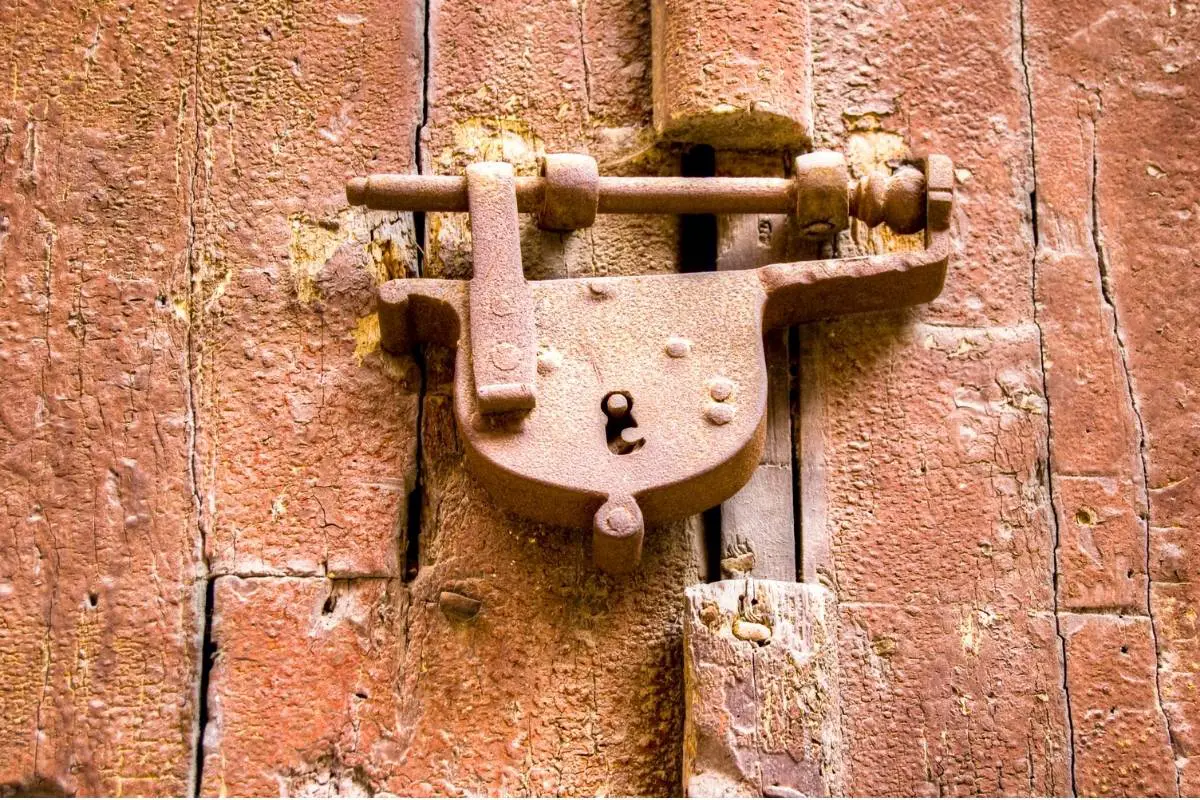The cast iron door locks are famous for lasting longer than the typical ones. But they are also susceptible to dirt and rust with time, which looks nasty. So, to make the locks look clean and aesthetic like before, you might want to know how to clean old cast iron door locks.
In order to properly clean the old and rusty locks, you can use some basic tools like spray and kits available at the hardware or paint store. Some ingredients like lemon, salt, and flour also remove the dirt from the locks.
Before you start the process, you need to follow some prerequisites. And we will cover those for you as well. So let’s get straight into it!
What Are the Prerequisites Before Cleaning Your Old Cast Iron Door Locks?
You need to prioritize your and your family’s health before you decide to clean that old cast iron door locks of yours. And for that, you must follow some prerequisites of a lead swab test.
Because while cleaning or disassembling the door lock parts from the door, you will definitely come in contact with the door paint and the coatings on the lock parts. And a lead test can confirm whether those coatings and paint contain harmful lead or not.
While cleaning or polishing the lead contained parts, the lead particles will be released into the air. And if you breathe in such air, it can negatively affect your nervous system, kidney, and different parts of your body.
So, before cleaning the locks, you must follow these steps below to prevent any health hazards –
- Step 1: First off, get your hands on a piece of a small sharp knife or a utility blade.
- Step 2: From a nearby hardware or paint store or online, ensure to buy a DIY lead test kit. Remember that there are many types of lead test kits available, you need to study your paint color and the kits first, before buying one.
- Step 3: If your door or door locks have dark paint or color, you should not buy a Sulfide lead kit because they give inaccurate results. And do not buy Rhodizonate kits for red or pink colors as these kits tend to give false-positive results for these colors.
- Step 4: Locate where the door paint finish is at its thickest, especially around the door locks. Then use your knife or blade to slice through the layers of paint. You can make a quarter-inch slit to do that.
- Step 5: Carefully open the swab from the lead kit and insert the soft tip into the slit or the incision you have made. While inserting it you need to apply a slight amount of pressure in a circular way so that the swab can come in contact with a sufficient amount of paint layer.
- Step 6: Keep the swab there for a few seconds or the time specified on the package.
- Step 7: If there is any lead, the swab will turn red, dark grey, or black depending on the type of kit you have used. But if the swab comes clean or does not change color, then you can disassemble and clean the locks without any worries.
- Step 8: It is better to go for a second test with another swab to confirm the result. Or sometimes, the lead kit comes packed with a confirmation card that you can use to confirm the result.
- Step 9: In order to use the card, drop or squeeze the reagent from the swab into a circle or dot on the card. Or you can rub the swab in the dot too.
- Step 10: Now check if the dot changes color or not. If the dot turns red or pink, you are all set to follow our next section to clean the locks as the finishing or coating has no lead.
How To Clean Old Cast Iron Door Locks?
You can use ingredients available at home or get lock lubricants as well to clean the cast iron door locks. And you can disassemble the parts of the lock or you can clean them without doing so. Here are the steps to clean the locks:
- Step 1: Take a bowl and add a tablespoon of flour, vinegar, and salt. Mix the ingredients properly to turn them into a thick paste.
- Step 2: Let’s take a piece of toothbrush and gently rub the paste over the lock hardware parts. Leave the paste on the locks for a few minutes.
- Step 3: Then with a soft and damp cloth remove the paste from the lock’s surfaces. And take a dry cloth to wipe the moisture off from the lock hardware. It will give the locks a shine.
- Step 4: You can also cut a ripened lemon in half and add some salt to the lemon pulp. Then rub the locks with the lemon to remove the rust, dirt, tarnish, or any bacteria. Do not forget to wipe the locks with a dry cloth after that.
- Step 5: Now it is time to remove the parts or fixtures of the locks from the door. You should definitely take off the parts if the locks are too old.
- Some locks have screws, others do not. So, based on the structure of your door locks, you will need a screwdriver, clip, or other tools to separate the fixtures.
- Step 6: After removing the fixtures, you need to remove paint from them if they have paint. For that, add water and a few drops of dish soap to an old crockpot. And place the fixtures or parts of the lock there. Set the pot to low settings and wait for a few hours.
- Step 7: Then remove the parts from the pot with a tong and place them on a dry cloth.
- Step 8: Now it will be easier to peel off the worn-out coating or paint from the fixtures. If you still struggle to scrape off the paint, place the fixtures again in the crockpot for a few hours and then try.
- Step 9: Some parts of the lock will have heavy rust and dirt on them, you need to use vinegar to clean them. So, take a pot and place the cast-iron fixtures there once you cover them with vinegar. Then let them sit in the vinegar for a couple of hours.
- Step 10: After a few hours, take the part one by one to rub the rust or dirt away with a soft damp cloth. You need to apply pressure while rubbing. Then with cool running water, rinse the parts of the locks.
- Step 11: Dry each part thoroughly before you head to polish them.
- Step 12: Take steel wool and gently polish the parts of the locks. Then clean the steel wool dust on the parts with a paper towel and WD-40.
- Step 13: Now that all the pieces are clean, take all the parts and re-install them one by one with care. After that, you need to reinstall or attach the parts of the locks to the door.
If you follow the process thoroughly, the cast iron locks will stay clean, rust and dirt free for a long time. You can also watch the video below to so that you can understand how to clean old cast iron door locks:
Did We Answer Everything You Wants To Know About How to Clean Old Cast Iron Door Locks?
It is not always possible to replace the cast iron door locks, especially if they are old models. So, to keep them long-lasting, you need to clean them more often. And hopefully, with our detailed guide on how to clean old cast iron door locks, the process will be as easy as ABC for you to follow!
Remember to dry the parts of the locks thoroughly before you reinstall them. And avoid using oil to clean them. If not, then the cast iron locks may develop rust within a few weeks after cleaning.
Frequently Asked Questions About Old Cast Iron Door Locks
What is the Price Range for a Lead Test Kit for the Old Cast Iron Door Locks? You will find lead test kits for several prices. The kits’ price range from $30 to $100 as well. And based on the type of kit you prefer, the cost can be cheaper or expensive. But it is better to go for a $100 kit that ensures several tests without professional help.
Do Old Cast Iron Door Locks Contain Lead Often? Usually, the cast iron door locks do not contain lead in their actual structure. But these days, you never know if any lead elements are there in the locks to make the finishing brighter. So, it is always better to go for a lead test before cleaning it.
Does the Cast Iron Door Lock Develop Rust? No, they do not develop rust often and often. But they are not completely safe from rust development either. So, if you are in a moisture-prone environment, you will need to wipe the locks to keep them dry and safe from rust.
How Often Should You Clean Old Cast Iron Locks? It should be fine to clean the old door locks made of cast iron every three months. If you keep spraying dry lubricant once a month, they should not develop dirt or rust for a long time.

